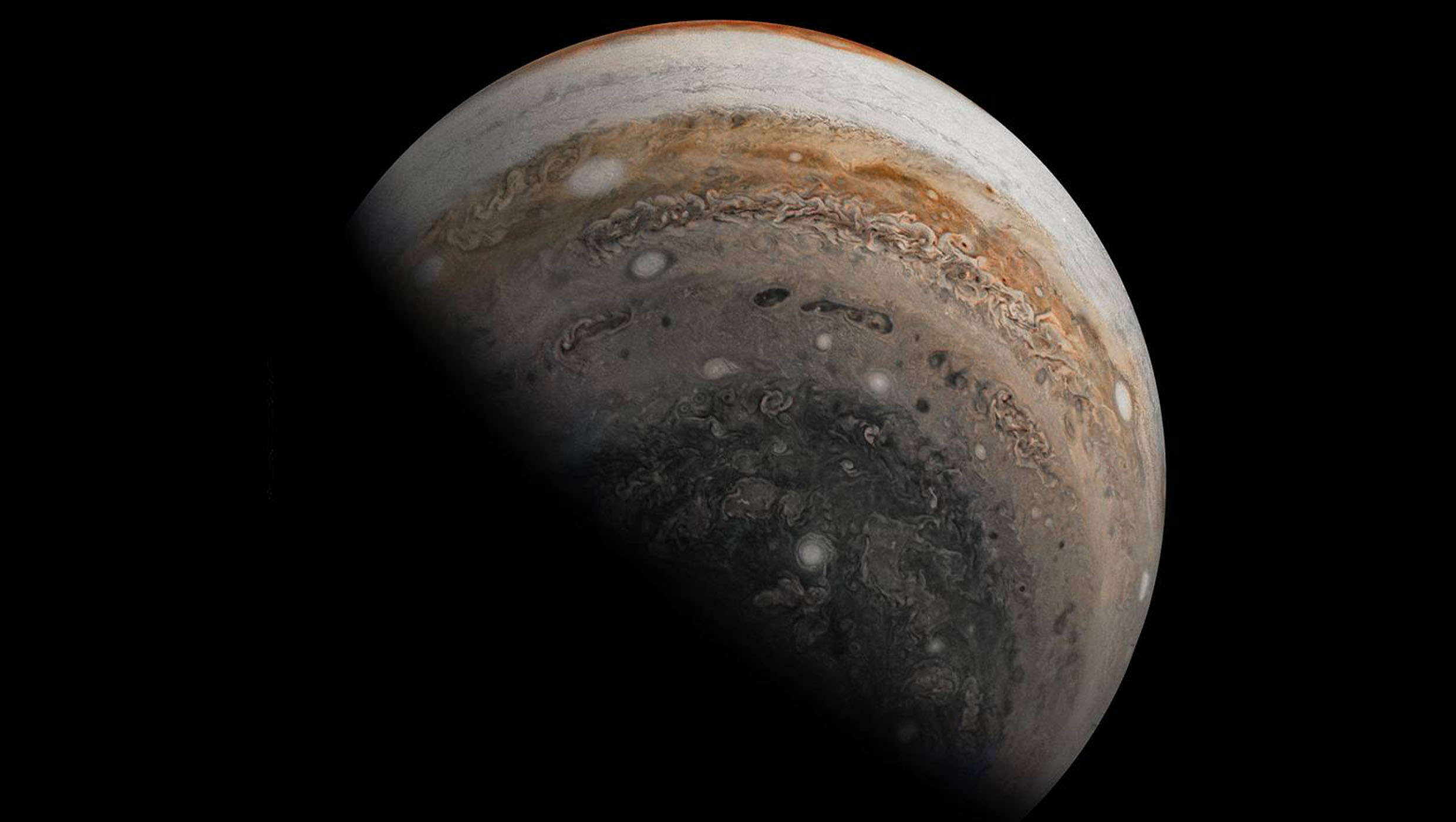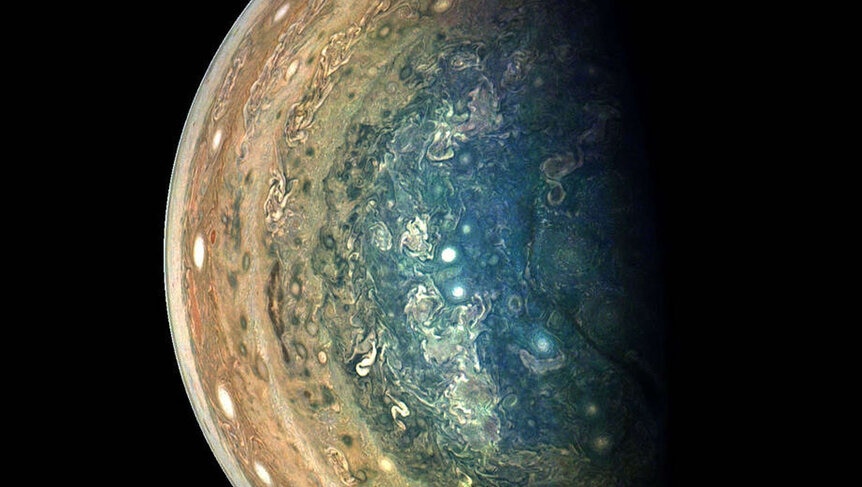Create a free profile to get unlimited access to exclusive videos, sweepstakes, and more!
Now we know why the UFO-like storms on Jupiter look like aliens left them behind

Jupiter is swirling with storms, but something even weirder than its Great Red Spot lurks away from the usual places that get all the attention from telescopes.
This is exactly the sort of thing we would suspect as being a sign of aliens if it appeared on Earth. The five glowing dots that are arranged in a pentagon at the gas giant’s south pole might remind extraterrestrial enthusiasts of crop circles or a glowing UFO formation. What they are is much more intense. The glowing orbs that have confused scientists for years are storms powered just like hurricanes, and the reason they are arranged in an eerie pentagon has finally been demystified by a team of Caltech scientists who combined Juno observations with a mathematical model based on observations from centuries ago. Math never goes obsolete.
"We wrote down the mathematical equation governing the motion of a single layer of fluid on a planet. Then we projected our domain to the polar region of Jupiter. Finally, we specified the position and the strength of those storms as what was observed," astrophysicist Cheng Li, who led a study recently published in PNAS, told SYFY WIRE.
Jupiter’s alien storms stay alive by feeding off the heat of Jupiter, just as hurricanes fuel themselves with Earth’s heat. On both planets, hurricanes form over warm water (or warm gas and vapor, in the case of Jupiter) when warm air from that water or those gaseous clouds rises into that storm and leaves behind a low-pressure area beneath. More air rushes into that low-pressure zone. As the air rises and cools, it creates clouds, and the vapor in those clouds turns into droplets as it condenses and emits even more heat. The more heat, the more power. The difference is that storms on this planet sputter to a halt when they migrate from the ocean they where suck heat out to areas above land and eventually run out of that fuel.
"Earth's hurricanes get the energy from the warm ocean beneath it," said Li. "Jupiter has internal heat retained from its formation. However, we don't know whether its storms are maintained by the internal heat or from other energy sources we don't know."
Hurricanes only stay powerful so long as they have a source of heat from water or gas to keep them going. Rubbing against land slows down their wind speed and makes those winds spiral inward, with the low-pressure area in a hurricane then falling apart when warm air blows elsewhere. This is where Jupiter has the advantage. Without land, there is much less friction to work against a storm. Jupiter also still has heat left over from when it formed, which, in its darker regions, makes up for the solar heat that radiates toward the parts of it that see the light.
While hurricanes on Earth tend to form near to the equator before meandering toward the poles and dissolving long before they get there, Jovian storms just keep going and going until they finally reach their destination, because there isn’t much of a difference in heat between its poles and equator.
Why the storms gathered to form a shape normally reserved for UFO claims on the internet was still unknown until Li’s team went back in time. Physicist Alfred Mayer had a major breakthrough in 1878 when he floated circular magnets in water and discovered that they would randomly arrange and rearrange themselves into geometric formations. Lord Kelvin—yes, that Lord Kelvin, who figured out the lowest possible temperature in the universe and has a temperature scale named after him—developed a mathematical model to explain this phenomenon.
Turned out that Mayer and Kelvin would never know this applied to planetary storms. When the researchers used this Victorian-era math to run computer simulations based on a digital model of Jupiter’s hurricanes, they found out how they managed to stay in that mysterious pentagonal arrangement instead of merging. The simulations revealed that each storm was surrounded by an anticyclonic ring, or a ring of winds that moved in the opposite direction the storm was spinning in. It was the anticyclonic rings that were repelling the storms so that they would stay in a stable pentagon rather than merge. This is called shielding, which also depends on depth.
“It is actually easy to get shielded. In some of our simulations, we could see that the migrating of the storms to the pole would drag the low-potential vorticity air with it (the shield). That's one way to get shielded,” Li said.
Nobody knows why Jupiter’s storms got it just right. Maybe those same aliens that leave geometric crop circles on Earth could tell us.



























